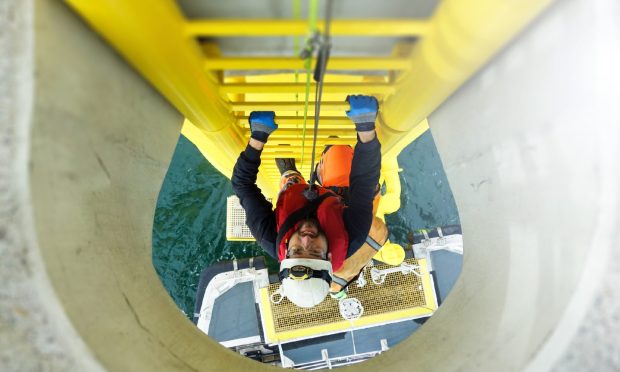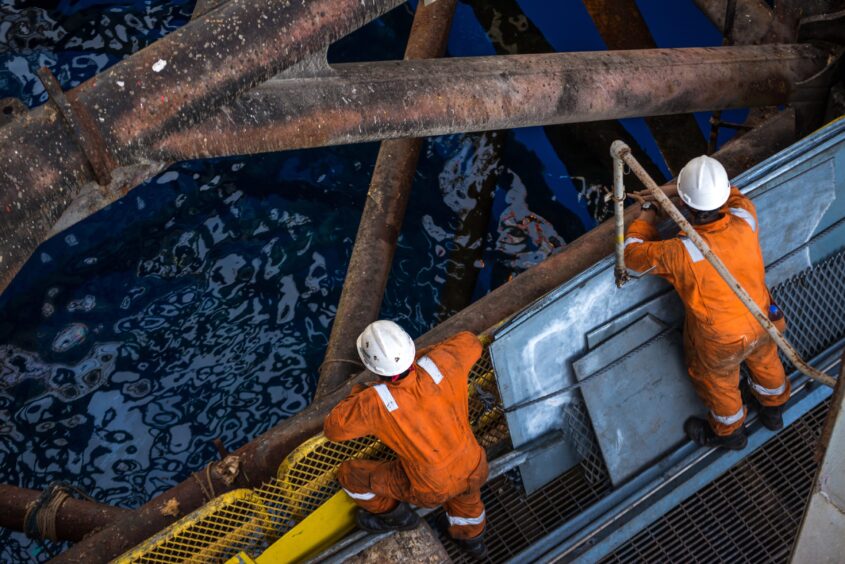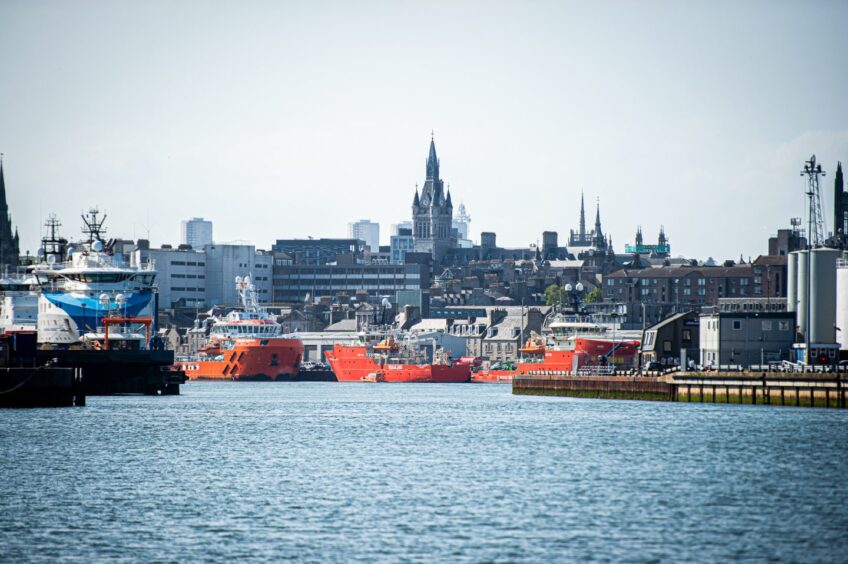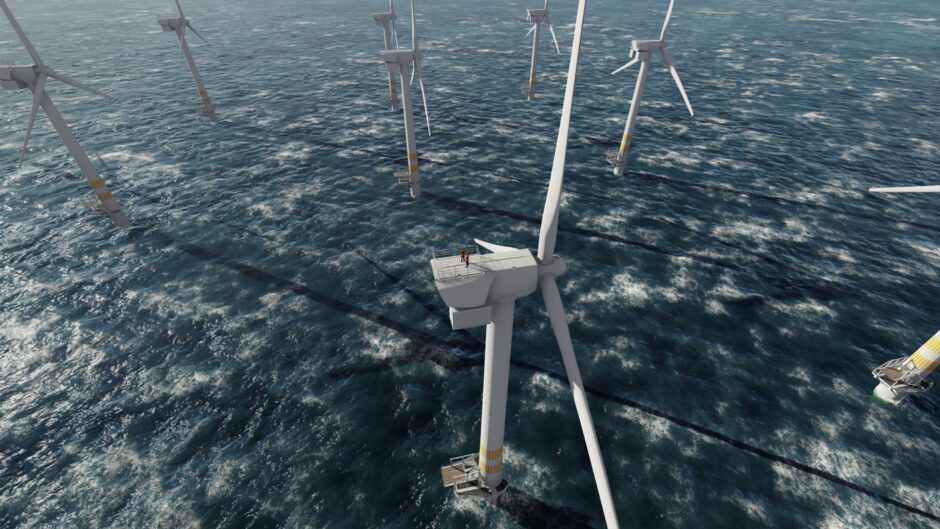About 31,000 Scottish jobs are at risk, with the north-east suffering the biggest impact, in a new report’s worst case scenario for the future of the UK offshore energy industry.
According to Paul de Leeuw, director of the Energy Transition Institute at Robert Gordon University (RGU), in Aberdeen, the Scottish-based offshore energy workforce could plunge by around 40%, from 79,000 to about 48,000 workers, between now and 2030.
This is under the gloomiest of three possible scenarios developed by Professor de Leeuw and principal project manager Sumin Kim in RGU’s Delivering our Energy Future report.
Best outlook could deliver 21,000 new jobs for Scots report says
Their best-case scenario reflects ambitions set out in the UK Government’s energy security strategy.
It would deliver an estimated 21,000 new Scottish jobs, many of them in the north-east.
But achieving this outcome will require huge investment and “urgent alignment across the political spectrum”, the report says.
And in a crushing blow to all those people hoping for a “just and fair” energy transition, the report’s co-authors say fewer than 15 out of 6,561 potential “pathways” to net-zero can actually deliver it.
And they warn: “When combined with an accelerated decline in oil and gas production and the consequential loss of jobs and skills, the number of viable pathways is reduced to fewer than five.”
Ongoing decline in the oil and gas industry needs to be “offset rapidly” by “identifiably greater levels of activity”, the report says.
Policy-makers will decide fate of UK’s ‘just and fair’ energy transition
And it calls for more UK content in renewables if any of the pathways to a “just and fair” transition are to remain open.
The report also says politics rather than energy market economics will, ultimately, dictate the size of the UK’s offshore energy workforce and supply chain in 2030.
In their main findings, the co-authors say:
- The UK offshore energy sector needs to spend up to £200 billion over the remainder of this decade across offshore wind, hydrogen, carbon capture and storage, and oil and gas projects.
- To sustain the offshore energy workforce at 2023 levels, the UK has to deliver close to 40 gigawatts (GW) of installed offshore wind capacity, compared to around 15GW cumulative capacity.
- Up to 40% of the investment needed to achieve this must be spent in the UK by 2030.
- If the UK is unsuccessful in delivering its offshore wind ambition and UK content target by 2030, it is unlikely to be able to retain the offshore energy workforce without additional activities, including oil and gas, over the rest of this decade.
Failure to deliver on energy transition ambitions will hit north-east harder
“Significant” levels of new operational capacity and capability are required to deliver on national targets for up to 40% UK capital expenditure content for new offshore wind projects and up to 50% for oil and gas decommissioning activities by 2030, RGU says.
And with nearly one in 30 Scottish jobs – rising to one in five in the north-east – currently tied to the offshore energy industry, the potential impact of “failure to
deliver on ambitions” is greater north of the border, the report warns.
Scotland may need to capture more than 50% of future offshore renewables activities across the UK just to maintain the current number of North Sea energy jobs, it says.
It adds: “If Scotland fails to capture a significant share of future renewables activities, selective oil and gas activities may need to be sustained until 2030 to retain the Scotland-based offshore energy workforce, skills, supply chain and economic contribution.”
“As highlighted in RGU’s Powering up the Workforce report, close to 154,000 people are directly and indirectly employed in the offshore energy industry.
“Around 80% of people in the industry – approximately 120,000 – are supporting the oil and gas industry, with the remaining 34,000 working in the offshore renewables sector.
“Depending on what scenario plays out over the remainder of this decade, the direct and indirect oil and gas workforce is expected to reduce by between 30,000 (managed decline) and 60,000 (accelerated decline) people by 2030.
RGU’s new report aims to secure ‘credible energy pathways’
“Given political uncertainty and the magnitude of change over the coming years, this report is specifically focused on ensuring the UK and devolved administrations are pursuing credible energy pathways that deliver a ‘just and fair’ transition for the sector.”
Launching the report, Prof de Leeuw said: “The UK still has a unique opportunity to create a new energy future.
“Accelerating the re-purposing of the North Sea as a world-class, multi-energy basin will ensure the sector can power the country for decades to come.
“The prize for the UK to get this right is enormous. But to deliver this requires action and urgency, which means faster planning and consenting, and access to the grid.
“We also need more flexible electricity pricing mechanisms to avoid project delays or cancellation, and a proactive focus on building UK content so we can design, manufacture, install, commission and operate some of the critical new infrastructure required.
“This, as well as building and maintaining the world class skills and capabilities developed over the last few decades, will be crucial.”
A far more agile and joined up approach is required to address how the country can best secure its energy ambitions.” – Professor de Leeuw, Robert Gordon University
He added: “While there is consensus across all stakeholders including governments, politicians, industry organisations and economic development bodies that we need to realise a ‘just and fair’ transition, a far more agile and joined up approach is required to address how the country can best secure its energy ambitions, while addressing the cost-of-living crisis, managing energy security and delivering on the net-zero agenda.”






Conversation